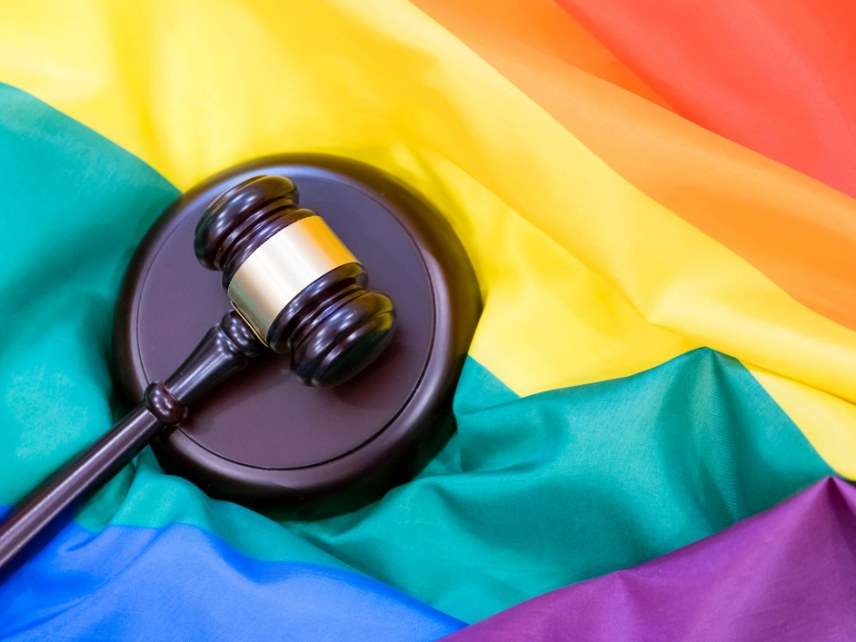Workplace Discrimination Against Gays Is Covered Under the Civil Rights Act, Says a Second Federal Court
A third court disagrees. The Supreme Court had the chance to take on the case to resolve the conflict, but it declined.

Two federal courts have now decided that Title VII of the Civil Rights Act protects people from workplace discrimination on the basis of sexual orientation, even though the law does not specifically use those words. A third federal court had previously ruled the opposite, and the current Department of Justice does not agree that federal antidiscrimination law covers sexual orientation. So there's a good chance one of these cases will end up before the Supreme Court within the next couple of years.
On Monday the 2nd U.S. Circuit Court of Appeals, which covers Connecticut, New York, and Vermont, reversed a previous panel decision and concluded, in a 10–3 opinion, that discriminating against a person on the basis of sexual orientation is a type of sex-based discrimination forbidden under federal law.
The Civil Rights Act of 1964 does not mention sexual orientation, and when it was first passed it certainly was not assumed to cover sexual orientation. But over time, as court precedents and case law have hammered out the contours of what "discrimination based on sex" means in practice, the door has opened to a broader understanding of the phrase. One of those precedents, a Supreme Court decision from 1989, ruled that punishing an employee on the basis of whether he or sh exhibited stereotypical gender traits is a form of forbidden sex discrimination.
That ruling is now being used to argue that anti-LGBT discrimination essentially punishes an employee on the basis of not engaging in stereotypical gender traits, as in entering relationships with somebody of the opposite sex (or in transgender cases, living as the opposite sex). The majority decision on Monday agreed with this argument, noting in part:
To determine whether a trait operates as a proxy for sex, we ask whether the employee would have been treated differently "but for" his or her sex. In the context of sexual orientation, a woman who is subject to an adverse employment action because she is attracted to women would have been treated differently if she had been a man who was attracted to women. We can therefore conclude that sexual orientation is a function of sex and, by extension, sexual orientation discrimination is a subset of sex discrimination.
With this ruling, the 2nd Circuit is on the same page as the 7th Circuit, which covers Indiana, Illinois, and Wisconsin. The 7th Circuit ruled in a similar fashion for similar reasons last spring. But this ruling is at odds with the 11th Circuit Court, which covers Alabama, Georgia, and Florida, and which has ruled that the Civil Rights Act does not cover sexual orientation.
The Supreme Court had the opportunity to hear an appeal of the 11th Circuit case and settle the matter, but in December it turned the case away.
Now we have two federal districts disagreeing with a third. Furthermore, we've got the Department of Justice at odds with the U.S. Equal Employment Opportunity Commission, which has been supporting the argument that the Civil Rights Act covers workplace discrimination on the basis of sexual orientation and gender identity.
At some point the Supreme Court is going to have to take a case to hear this argument. It seems untenable for workplace discrimination against LGBT people to be a violation of federal law in New York but not in Georgia. This isn't about a difference in what classes are covered by each state's own laws. This is an inconsistent application of federal law.


Show Comments (225)